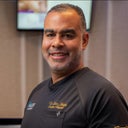I'm interested in a rhinoplasty but I fear that if I deproject the tip of my nose it will increase the length of my philtrum (I've seen this in many before and afters with patients that have similar features as mine). In my photos you can see that my philtrum is already quite elongated, I believe if It were to increase even slightly that it will make a huge impact. What is suggested? Will a chin aug make it so I don't have to deproject? I'm not interested in lip fillers for shortening philtrum.
Answers (11)
From board-certified doctors and trusted medical professionals
Dr. Steven M. Denenberg, MD

Dr. Steven M. Denenberg, MD
Board Certified Facial Plastic Surgeon
Answer
Dr. Kenneth Hughes, MD

Dr. Kenneth Hughes, MD
Board Certified Plastic Surgeon
Answer
Dr. Ronald J. Edelson, MD

Dr. Ronald J. Edelson, MD
Board Certified Plastic Surgeon
Answer
Dr. Richard G. Reish, MD, FACS

Dr. Richard G. Reish, MD, FACS
Board Certified Plastic Surgeon
Answer
Dr. Farhad Rafizadeh, MD

Dr. Farhad Rafizadeh, MD
Board Certified Plastic Surgeon
Answer
Dr. Bahman Guyuron, MD

Dr. Bahman Guyuron, MD
Board Certified Plastic Surgeon
Answer
Dr. Steven Wallach, MD
Dr. Steven Wallach, MD
Board Certified Plastic Surgeon
Answer
Dr. William Portuese, MD
Dr. William Portuese, MD
Board Certified Facial Plastic Surgeon
Answer
Dr. Robert L. Kraft, MD, FACS

Dr. Robert L. Kraft, MD, FACS
Board Certified Plastic Surgeon
Answer
More Rhinoplasty Questions
See all Rhinoplasty Q&AWE SEND PRETTY
EMAILS
What’s trending? Who’s turning heads? Which TikTok myths need busting? We’ve got you. No fluff, no gatekeeping—just real talk. Get our free, unfiltered newsletter.
